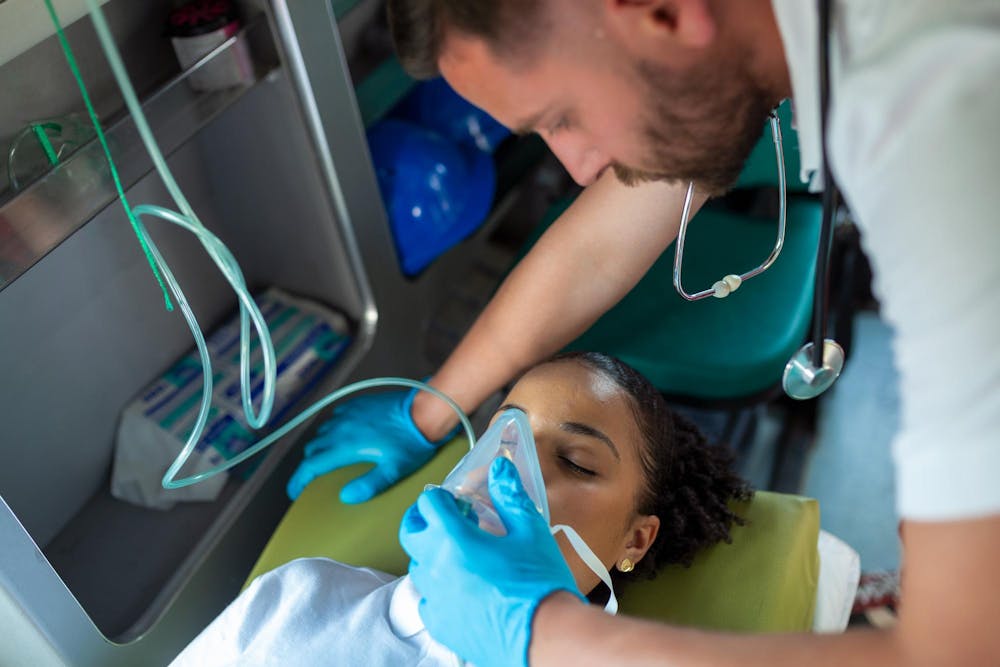Photo by Stefamerpik on Freepik
Sedation is one of the most imperative skills for healthcare providers to acquire to ensure patient safety. It has revolutionized how healthcare providers deliver care, offering a balance of comfort and responsiveness for patients undergoing various procedures. Therefore, moderate sedation training protocols are needed to enhance patient care significantly.
The Impact of Moderate Sedation on Patient Care Standards
Moderate sedation is a medical technique that makes a patient feel relaxed and comfortable but still conscious and capable of responding to verbal or light touch stimuli. Assistance is unnecessary to keep the airway open, breathing can be done naturally, and heart function is stable. It differs from deep sedation, where the patient is heavily sedated. Which rendered a patient unresponsive except to painful stimuli.
Typically, moderate sedation is used for interventional pain management procedures to ensure the patient's comfort and relaxation whilst they are still conscious and capable of responding to verbal or bodily stimuli. The level of sedation is achieved using specific medications designed to help alleviate anxiety during certain medical or surgical procedures.
Sedation practice guidelines and protocols provide professionals with clear instructions for each sedation type. They help determine when sedation is appropriate and when it is better to choose alternative approaches. A thorough pre-procedure review is a must. It should include obtaining a detailed medical history and conducting a physical examination to make sure sedation is safe for the patient. Additionally, accurate documentation plays a crucial role in internal medicine medical billing, ensuring that sedation procedures are correctly coded and reimbursed while maintaining compliance with healthcare regulations.
Faster Recovery and Reduced Risks with Moderate Sedation
Sedation practice guidelines provide recommendations on how to prepare and monitor patients during sedation and outline criteria for faster patient recovery and discharge. These include ensuring proper vital signs monitoring, airway assessment, oxygenation levels, reduced risks, etc. Also, there are specific recommendations on observing post-procedure vital signs and monitoring patients as they recover from the sedation procedure.
There are potential side effects, such as drowsiness, dizziness, and nausea. However, sedation is well-proven and tested in practice offering a safe and comfortable experience. The safety profile of moderate sedation is linked with fewer adverse events and complications. When using moderate sedation for procedures the patients recover faster than general anesthesia. Patients who undergo procedures with moderate sedation better perceive the care they receive.
Improving Patient Comfort with Capnography and Patient-Controlled Sedation
Sedation administration is an overly sensitive procedure that requires a professional, since issues can occur. This fact confirms the need for sedation intervention to prevent respiratory or cardiovascular compromise and maintain airway patency. However, advanced technologies further enhance the quality of care:
- Patient-controlled sedation or PCS devices empower patients to self-administer sedation medication, allowing for greater control over their comfort levels and reducing the risk of oversedation.
- Capnography is a tool measuring ventilation. It is a noninvasive measurement of the partial pressure of CO2 from the airway during inspiration and expiration.
Implementing these measures, along with innovative healthcare platforms, can maintain the highest standard of patient safety. Healthcare professionals must prepare patients and mitigate any unforeseen challenges. Care teams should also stay abreast and align with current healthcare standards.
Adaptive Dosing for Optimal Sedation
Pharmacologically, adaptive dosing regimens involve changing the dose of the administered medication depending on the patient’s physiological underlying response. This regimen could ensure that patients stay only slightly sedated.
3 Key Components of Advanced Moderate Sedation Protocols
Advanced sedation guidelines set forth clear definitions for accessible levels of sedation that include minimal, moderate, and deep sedation. These modified protocols help the practitioners understand which sedation is admissible or when other options should be chosen and identify harmful signs.
In critically ill patients, sedation applies to the processes under which sedation aims at giving the patient focal sedation disregarding both under-sedation and over-sedation. For example, propofol and dexmedetomidine protocol for ERCP enhances the quality of the sedation.
1. Comprehensive Pre-Sedation Patient Evaluation
A pre-sedation assessment enables the practitioner to identify the risk factors interfering with the patient and directs the suitable sedation. This evaluation typically includes:
- A medication review to exclude present-day modern drugs that might have an interaction with sedative drugs.
- Examining the client's health data, previous surgeries, and allergies.
- General body check-up to see body health status.
2. Precise Medication Selection and Dosage Management
Sedative agents used in sedation may vary, including propofol, dexmedetomidine, ketamine, fentanyl and midazolam — all of which may commonly be used in sedation. However, the type of sedative to be used is determined by certain factors such as age, medical history, expected procedure time and the professional team administering the medications.
3. Continuous Monitoring of Vital Signs During Sedation
Advanced sedation guidelines and protocols help doctors before the administration of sedation, during the process, and after giving sedation, detailing each step and what to expect.
Standard tools for tracking include:
- Pulse oximetry
- Electrocardiography (ECG)
- Capnography
Advanced sedation protocols will shape future patient care by:
- Making patients safer
- Comforting patients
- Enhancing monitoring with AI-based surveillance systems.
The Future of Patient Safe with Advanced Sedation Protocols
Sedation protocols will continue to improve patient safety. They will assist clinicians in handling patients during every stage of the procedure:
- reducing risks and enhancing results with innovative tools and the best knowledge of the topic.
- Boosting comfort levels for a better experience.
- Using digital surveillance with artificial intelligence to improve the service and procedure outcomes.
Conclusion
Moderate sedation entails giving the patient medication, which helps them relax during medical procedures. It provides relief from anxiety and helps in alleviating pain. Sedation protocols cover all critical aspects of care, including patient preparation, monitoring vital signs, and implementing strategies to prevent or manage potential risks, ensuring safety and optimal outcomes.





